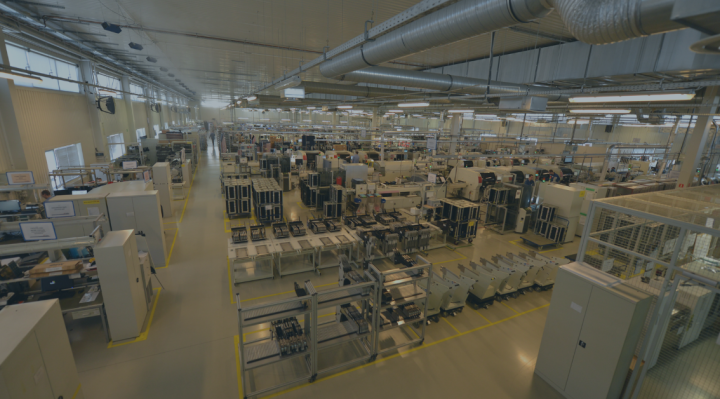The 5S method was developed in Japan shortly after the end of the Second World War. Its name comes from the first letters of five words: sorting, systematics, shine, standardisation and self-discipline. Today, it is applied in many companies, effectively contributing to increasing production efficiency and reducing costs.
Where did the 5S method come from?
After the end of the Second World War, Japan was occupied for some time by the United States, which set as its main objective its demilitarisation, democratisation and decentralisation. However, the ‘Cold War’ significantly changed these plans. The Land of the Cherry Blossom soon became an important ally for the USA in the Far East, receiving considerable financial and technological support. It quickly developed from a relatively poor country into an Asian tiger and by the end of the 1960s was already the third economy in the world.
However, this success was achieved mainly by the Japanese themselves. Their unique culture, frugality and industriousness were naturally transferred to companies. In addition, limited resources and the need for their optimal use contributed to the development of a system of managing the organisation, now known as lean management. Its basic tool is the 5S method, which was initially called 4S and was created and popularised by Toyota. The main architect of this philosophy was an engineer Taiichi Ohno. The name of the method comes from the first letters of five words denoting its individual elements. In Japanese companies, however, the number ‘S’ has sometimes deviated from the traditional model. This depended, inter alia, on the degree of implementation of the tool or the organisation's objectives. The philosophy was popularised worldwide by Hiroyuki Hirano and Takashi Osada in the 1990s. It quickly gained popularity and today is used in many companies.
Elements of the 5S method
The aim of 5S is to establish and maintain order and discipline in the workplace. The method is based on five pillars:
- Seiri – sorting,
- Seiton – systematics,
- Seiso – shine,
- Seiketsu – standardisation,
- Shitsuke – self-discipline.
The first ‘S’, i.e. sorting, means that only necessary and functional tools, products and components should be present at the workstation. A red card is often used for this task, with which defective products are marked. It is important here that defective items are moved to a designated place or removed from the plant. Also, functional parts and finished products must be kept to an absolute minimum and surplus items must be transferred to other departments. The workstation must be functional and free of unnecessary barriers.
The second pillar of the 5S method is systematics, i.e. the grouping, labelling and arrangement of all items. In this case, the rule is that there should be a place for all necessary items in the plant. Access to them should be easy and quick for every authorised employee. It is important to divide items into different groups, e.g. materials, semi-finished products, finished products, tools, etc. When doing the allocation, ergonomic principles and frequency of use should also be taken into account. Things which are used frequently should be stored low, while those which are used less often should be stored high. Another issue is the proper marking of products, using appropriate labels and symbols. It is also necessary to designate communication routes.
The third element of the 5S should also be implemented in the company, i.e. shine. For this purpose, it is worth, for example, to develop a schedule of maintaining cleanliness. Each employee should know for which area he/she is responsible and how often he/she has to clean up. Cleaning increases the sense of responsibility in employees, allows for earlier detection of defects and reduces the risk of accidents.
Standardisation is the implementation of appropriate standards and rules to the previous ‘3S’. It includes, for example, the creation of schedules, labels, instructions, diagrams or checklists. The objective of the fourth ‘S’ is to develop the same standards for all repetitive activities in the company. Internal audits are also used for this task, during which compliance with existing procedures can be verified.
The last pillar is self-discipline. All employees should be involved in the 5S activities. Subordinates should perform tasks in accordance with the standards in force without the need for constant control by superiors. The role of management in this case comes down more to leadership than supervision. Good communication and promotion of the benefits resulting from the introduced implementations is also of great importance. Also important is the desire for continuous development, self-improvement and participation in regular training.
Benefits of implementing the 5S method in production
If the 5S is well introduced and implemented in the organisation, and then followed and systematically developed, it will certainly bring very specific benefits. The most important of these are, first of all, an increase in work efficiency and a reduction in costs, which, of course, will quickly translate into improved company profits. In addition, it will be possible to observe such changes as:
- reduced downtime,
- reduced number of accidents,
- improved cleanliness of workstations,
- increased customer satisfaction,
- improved product quality,
- reduction of waste,
- reduction of unnecessary movement of workers,
- increased machine uptime and reduced breakdowns,
- optimal use of available space,
- improvement of communication in the company.
The implementation of 5S permanently changes the way employees look at the company. They feel a part of the organisation and take full responsibility for their decisions. This translates into greater job satisfaction and also has a positive impact on their personal life.
This method brings particularly visible effects in manufacturing companies. A good and experienced EMS has implemented the 5S method and systematically adheres to it.







